Diwali, also known as the festival of lights, is one of the main festival celebrated in various parts of India. Diwali is associated with good food, fireworks, lightings and rangoli. But according to data released by civic bodies, 50 tonnes of excess waste is collected every year after Diwali, in comparison to normal days.
Diwali is a festival that symbolizes the triumph of light over darkness. But like any other festival it is associated with problems like waste generation, air pollution, etc. Every year the day after Diwali roads can be seen littered with remnants of crackers and a pungent air. Majority of the waste generated are dry waste like papers, plastics, firework covers, etc. Moreover it is a ritual in some parts of India to clean the entire house and paint during Diwali. This creates additional waste. Massive amounts of non-biodegradable waste are also generated. On the day after Diwali more than 800 tonnes of plastic waste are collected every year. These waste are not only polluting the land but also the air and surrounding water bodies. Every year the government takes active steps to curb air pollution by imposing strict regulations on bursting crackers during Diwali. But what about the tremendous waste that is generated after Diwali celebration?
Let us discuss the types of waste generated during Diwali and the various ways to make this festival greener or eco-friendly.
Waste generated during Diwali
Plastic waste
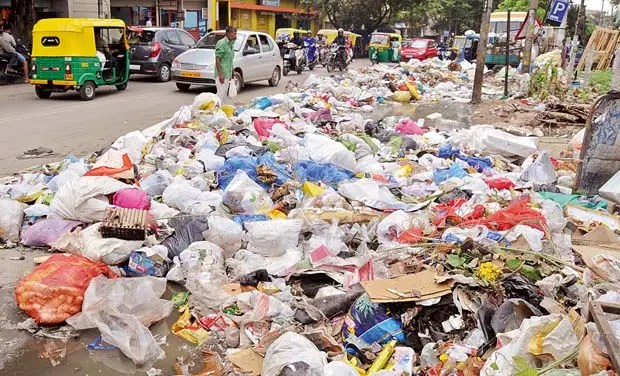
During Diwali a lot of plastic waste is generated in the form of plastic disposable cutleries, lamps and other decorative items, plastic packaging for gifts or ready made snacks. Food is an important part of all Indian festivals and often people prefer to serve food in plastic disposable vessels in order to avoid the hassle of washing the traditional cutleries. People also prefer to order food from outside in order to save time and energy which mostly comes in plastic packaging. It is a tradition to gift your near and dear ones with gifts during Diwali which are mostly packed in plastic wrappers. The decorative items nowadays are mostly made of plastics and very few people use earthen lamps and diyas for lighting.
Food waste
A lot of food wastage can be seen during Diwali as food being one of the most important thing. Serving food to guests is a part of Indian tradition to show love and gratitude towards them and while doing this people prepare or order too many food items which often gets wasted.
Firecracker waste
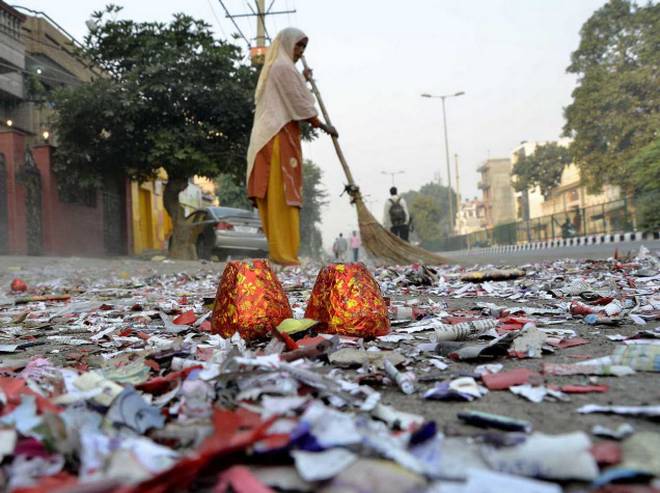
After Diwali the roads are often filled with cardboard tubes and heat resistant hard plastic fragments from spent fireworks. These waste cannot be recycled. There are possibilities of some dangerous unspent fireworks finding their way into waste collection bins and recycling facilities where they might explode. A high concentration of heavy metals such as barium, antimony, copper and titanium can be found in these materials which give the fireworks their vibrant color and sparkle. These metals can contaminate the materials that can be recycled; if put together in recycling collections. The metals can also contaminate the soil if left in the garden for a very long period of time. Fireworks with a white colored flame contains less heavy metals as compared to the ones with colored flame and is therefore less toxic to the environment.
Rangoli
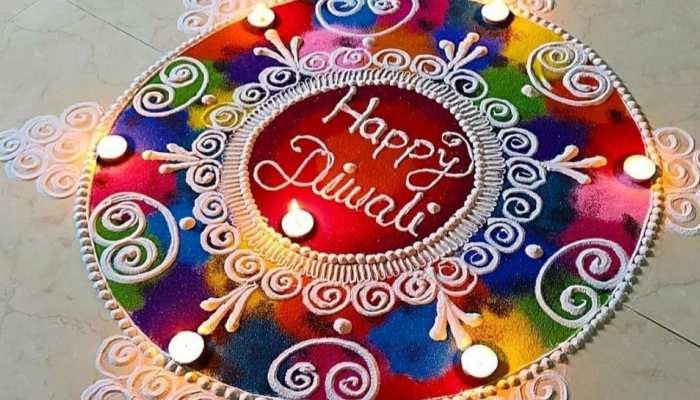
Rangoli forms an important part of Diwali celebration. People decorate their houses with beautiful rangoli designs using colors that contain chemicals. These rangolis are often swept away after Diwali and thrown away in the bins, thus polluting the environment.
E-waste
On Diwali people buy new lightings and throw away the previous damaged ones in the bins. Usually the lightings are not long lasting and every year people buy new ones. Also during this time of year people buy many electrical equipment and dispose off the old unused ones. This generates a lot of e-waste.
Clothing waste
Buying and wearing new clothes is a tradition during Diwali. Every year the clothing style changes due to fast fashion and people usually wear the dress for once. This generates a lot of clothing waste.
What is a green Diwali?
Green Diwali means celebrating Diwali in an environment friendly way by opting for materials that are less toxic and have minimum impact on the environment. But that does not mean one should compromise with the fun associated with this festival. We can make Diwali greener in a number of ways and still make it enjoyable and memorable.
Let’s discuss some of the ways to make Diwali greener and happier.
Ways to celebrate a green Diwali
Using earthen diyas instead of plastic ones
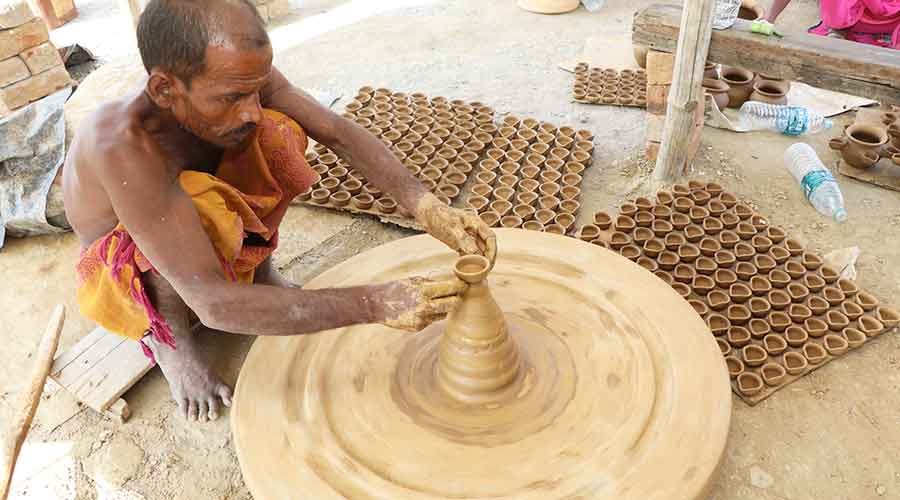
The traditional earthen diyas are the best ones to use for lightings in Diwali instead of plastic ones as they do not have any impact on the environment. Buying earthen diyas will also support the local potters whose livelihood depends on the sale of these items. Nowadays people use decorative plastic lightings which are not long lasting and often thrown away after single use and are non-biodegradable.
Using green crackers
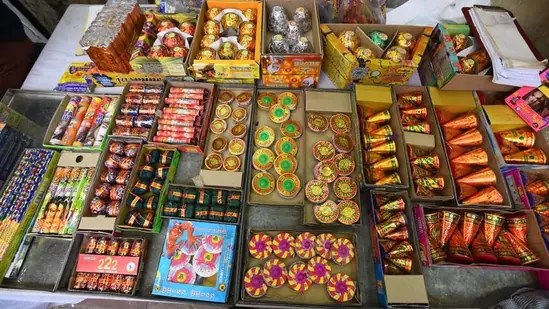
We should avoid bursting crackers as much as possible. Even if we want to burst we should opt for green crackers that are less toxic than the traditional ones. Green crackers does not contain hazardous elements like barium nitrate and cause 30 percent less air pollution than the traditional ones. After bursting the firecrackers the used crackers should be completely submerged in a bucket of water and should be soaked overnight. The soaked crackers should be wrapped in a plastic bag to retain the moisture. It can be then send to landfill for proper disposal. Unsoaked crackers should not be put directly into waste bins as they might explode.
Types of green crackers
SWAS (Safe water releaser): These crackers release water vapors on burning. They do not contain potassium nitrate and sulphur and release 30% less particulate matter.
STAR (Safe thermite crackers): They have a low sound intensity and contains no potassium nitrate and sulphur. They also release reduced particulate matter.
SAFAL (Safe minimal aluminum): They also have a reduced sound intensity and use magnesium instead of aluminum.
Using organic colors for rangoli
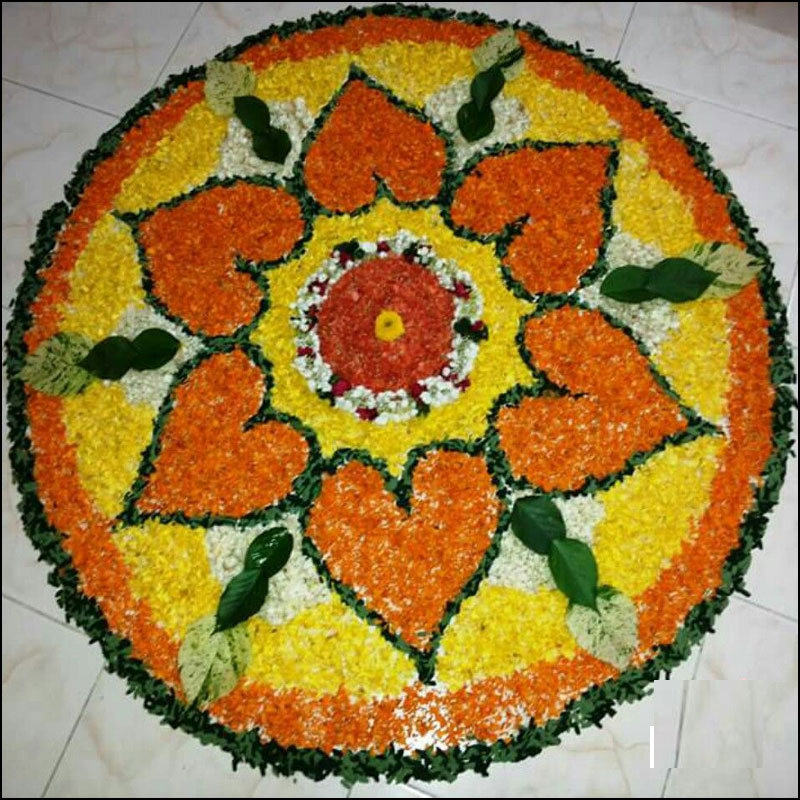
Diwali is incomplete without rangolis. One can opt for organic colors instead of the ones with chemicals that are non-biodegradable. Organic colors like turmeric powder, flour, cinnamon, flower petals, etc . are the best options. The used flower petals can be recycled and used to make incense sticks, organic vermi compost and biodegradable packaging material.
Avoiding wastage of food
Food should not be prepared above the estimates. Ordering of food from outside should be avoided as much as possible as they come in boxes which are not environment friendly. For serving food to the guests one should opt for biodegradable cutleries and vessels instead of the ones made of single-use plastics.
Using cloth packaging for gifts
While gifting your near and dear ones is a tradition in Diwali, the gifts should be wrapped in biodegradable packaging like cloth bags, instead of plastics. Also gifting eco-friendly items like plants, handmade products, khadi items, etc. is a nice way to protect the environment.
Donating your old clothes
It is a good idea to donate the old clothes to poor and needy instead of discarding them, as buying new clothes in Diwali is a ritual. Discarding the old clothes will only pollute the environment. The existing clothing can also be repaired, altered or upcycled to give it a new look.
Managing e-waste
Recycling the e-waste generated during Diwali is very important. The e-waste can be hand over to authorized e-waste collector. If possible the old electronic items should be repaired and reused to reduce waste.
Initiatives to manage waste during Diwali
Nowadays, many initiatives have been taken to tackle the waste after Diwali.
Binish Desai, a social entrepreneur from Gujrat has made eco-friendly lights in eight different models, that are majorly made out from secondary paper sludge waste. NGO’s like HOPE in Varanasi is taking active steps to aware the people about celebrating Diwali in an eco-friendly way. SWaCH, a Pune based waste management cooperative, helps people in cleaning up their houses before Diwali and collect the waste for re-purposing in different ways. Hafiz Khan and his team of 45 people from Chennai, under a trust called Communitree, turned 27,000 empty boxes of firecrackers into sapling holder after Diwali. A group of students from IIT Delhi have designed eco-friendly lamps made from cow dung. This initiative was undertaken by project Arth, a social venture founded by IIT Delhi along with Enactus, an environmental think tank in the US.
Like these there are so many initiatives taken by people in different parts of India to tackle the waste generated after Diwali.
Conclusion
There are a number of ways to make Diwali greener or eco-friendly. Any celebration should not come at the cost of the environment. We can still enjoy and have fun by opting for eco-friendly ways of celebration.
Be blessed with smiles and not pollution on Diwali

